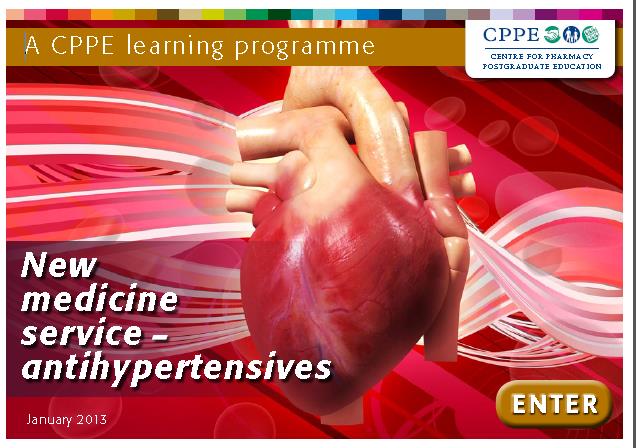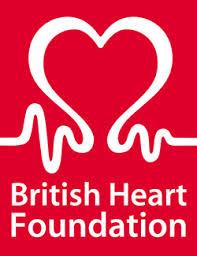Medication review tips and hints for cardiovascular medication
Medication review tips and hints for Graham Parsons and Mark StoneCopthorne Hotel
18th August 2014
• Anti-hypertensive agents • Nitrates • Statins • Anticoagulants • Antiplatelets Anti-hypertensive agents • Angiotensin-Converting Enzyme (ACE) inhibitors • Angiotensin-II receptor antagonists (ARB) • Calcium Channel Blockers (CCB) • Diuretics • and -blockers • Widely used • Lisinopril and ramipril 1st choice in S&WD formulary1 (perindopril 2nd line) • Most common side-effect is dry cough in about 15% (10% men and 20% women) of patients – can switch to an ARB BUT eliminate "Red Flags" and other possible diagnosis. • Risk of 1st dose hypotension – take at bedtime; stay inside and no driving for 4 hours post-dose – often titrated up slowly (especially for HF) • Risk of hypotension with diuretics and hyperkalaemia with potassium sparing diuretics ( U&E [see below]) • Renal function assessed at baseline; 7-10 days post initiation, dose and annually (6m if HF patient) 1. South and West Devon Formulary and Referral site.

• Candesartan* and losartan* 1st line in S&WD formulary
(irbesartan and valsartan* 2nd line)
• Ensure regular renal function monitoring also • Particularly well tolerated with mild side-effects –
symptomatic hypotension & occasionally hyperkalaemia and angioedema (very rare but potentially life-threatening)
• Primarily used for hypertension and angina but other
indications e.g. Raynaud's Phenomenon
• 1st line = Amlodipine; 2nd line = Felodipine, lercanidipine,
diltiazem & verapamil; Specialist = Nifedipine
• Constipation common SE (especially verapamil) – lifestyle
• Flushing, headache & ankle swelling (usually improve with
continued use – not usually improved with diuretics)
• Short-acting nifedipine not recommended due to wide
fluctuations in BP and reflex tachycardia – generally just for
Raynaud's Phenomenon
• Verapamil NOT with -blocker ( risk of bradycardia) –
caution with diltiazem & B
• Prescribe MR diltiazem & verapamil preparations by brand
(excluding 60mg diltiazem tabs)- bioavailability variations
• Taken mainly in morning to minimise impact of diuresis BUT
consider lifestyle of patient – do they always go out in the morning??
• Electrolyte monitoring necessary with long-term use
especially if renal impairment is present
• Patients may get light-headed (hypotension) – BP
• Possible hyperglycaemic effect – caution with βB/IGT • Erectile Dysfunction may also be a problem • 1st line = Indapamide • 2nd line = Bendroflumethiazide and metolazone
and -blockers • Many indications outside hypertension e.g. angina (βB) and
anxiety (βB) and +++ in S&WD formulary!
• Caution with asthma or bronchospasm – if no alternative use
cardio-selective drug (e.g. bisoprolol) with caution – regular peak-flow monitoring recommended
• Can cause bradycardia, cold extremities, fatigue, sexual and
sleep disturbances/nightmares (less common with water-soluble B e.g. atenolol)
• Can affect glucose tolerance if patient is diabetic • Bs can cause significant 1st dose postural hypotension
(especially in elderly patients) and CNS depressant effects – CAUTION – take dose at bedtime
• Role in angina • 1st line = GTN (tablets and spray) and ISMN • Does the patient know how to use GTN formulations?
excellent leaflet resource
• Tolerance a problem – ensure:
• 8 hour asymmetrical dosing with IR drugs (8am & 4pm)
• MR formulations given only ONCE a day (recommend Chemydur® XL,
Monomil XL® modified release tablets 60mg in S&WDF for cost
effectiveness)
• Patches: leave off for "several consecutive hours in each 24 hours" IF
tolerance suspected
• Side effects: flushing, headache and postural hypotension • angina symptoms even if possible tolerance – refer back to
• Over a million prescriptions/week in UK (2011) • Simvastatin in the evening (WHY??) but evidence suggests others
may be taken anytime (longer t1/2) – think patient centred therapy!
• Caution with grapefruit juice = plasma levels (atorvastatin [??]
and simvastatin2)
• LFTs at baseline and within 3m and at 12m • Unexplained muscle pain, tenderness or weakness = refer to
• Adherence a BIG issue with some studies reporting as low as 20%
- explore and understand – Morisky-8 questionnaire??
2. BNF 66 September 2013 – March 2014
Statin groupings and S&WD formulary choices
1st Choice = Atorvastatin tablets; Simvastatin tablets
2nd Choice = Atorvastatin CHEWABLE tablets; Pravastatin tablets
Specialist = Rosuvastatin tablets
Antiplatelet agents
• Aspirin 21% reduction in non-fatal myocardial infarction (secondary MI),
aspirin other benefits (emerging evidence), clopidogrel MI benefits similar, ticagrelor & prasugrel (+aspirin in ACS) >30% reduction MI death
• Antiplatelet (mainly aspirin) cause 16% of the preventable drug-related
admissions caused by adverse drug reactions
• The use of low dose aspirin is associates with a 2-4 fold increase in
upper GI adverse events (incidence 1 in 200 people per year). Clopidogrel similar AEs. >50% GI adverse events asymptomatic
• Age (>60years) and previous GI event, H.pylori (2-3.5 RR increase),
concomitant NSAID (2-4 RR inc), seen as major risk factors, SSRI
• Aspirin not for stroke in AF! No benefit from E/C preparations, PPI
reduce RR of GI AEs by up to 66%
TIP: Always ask on history and symptoms of GI disease –
need for PPI? (not omeprazole), always advice take after
food (no evidence), reduce daily dose of NSAID
TIP: Clopidogrel dosing period usual 12 months or less,
ticagrelor and prasugrel 12 months.
• Atrial fibrillation affects up to 750,000 people in the UK, AF increases
the risk of stroke by 5 times, 12,500 strokes caused by AF each year
• Around 46% of patients who should be on warfarin receive it • Warfarin reduces the risk of stroke by 70%, if well controlled (TTR
>70%) (NNT=25 NNH serious=>200)
• In patients since 1954. Considered CHA2DS2-VASc score 1, recc >1. • Warfarin (mainly aspirin) causes 9% of the preventable drug-related
admissions caused by adverse drug reactions (x2 risk aspirin),
TIP: Ensure adherence to NPSA alert for dispensing 18 March 2007.
• Dabigatran 150mg BD and apixaban 5mg BD a lower stroke risk than
warfarin (similar bleeding rate), rivaroxiban 20mg OD non-inferior to warfarin (similar bleeding rate)
TIP: No antidote to NOACs, NEVER double dose check SPC for advice
TIP: Get dose right (indications VTE, PE, stroke), Dabigatran dose >80
TIPs: ‘WARFARINISED':
When to take – at the same time each day.
Alcohol – may increase anticoagulant effect of warfarin.
Risk of bleeding – increased because blood takes longer to clot. If you have
bleeding from the nose or gums or blood in urine or stools go to A&E. If head
trauma causing bruising, laceration, loss consciousness to A&E.
Follow up – keep all appointments at the anticoagulation clinic to ensure INR
levels are regularly checked.
Aspirin – avoid taking aspirin unless prescribed for you.
Reason for taking – to slow down rate at which blood clots.
Interactions – drugs can interact with warfarin; always ask a pharmacist before
buying any OTC medicines.
Notify GP, dentist – warfarin WILL influence treatment.
INR – stay within the recommended range (most 2.5 range 2-3).
Skipped dose – don't skip any doses. If any are missed, make a note in your
yellow anticoagulant book but continue with normal dose for that day. Do not
double the dose to catch up.
End of course – ensure patient is aware of how long they need to take warfarin
for.
Dose – keep to the prescribed dose. It will be recorded in your yellow book and
may change following an INR check.
The Most Commonly Seen Warfarin Interactions
Warfarin is unique in its interactions because it is completely metabolized by the liver and is
sensitive to changes in elimination. Most of the drug interactions are pharmacokinetic, i.e.
those that change the absorption, distribution, metabolism and elimination of warfarin.
Pharmacodynamic interactions, where there is an increase/decrease of pharmacological
effects is also a significant interaction type with warfarin.
PHARMACOKINETIC:
• Interactions that increase the effect of warfarin
• Amiodarone, Amitriptyline*, Bezafibrate, Ciprofibrate, Ciprofloxacin, Clarithromycin,
Cranberry Juice, Dexamethasone*, Erythromycin, Esomeprazole, Fenofibrate, Fluoxetine, Grapefruit Juice, Itraconazole, Ketoconazole, Lansoprazole, Metronidazole, Miconazole, Omeprazole, Orlistat, Paracetamol, Penicillin(s), Phenytoin*, Prednisolone*, Rosuvastatin, Simvastatin, Tamoxifen, Thyroid Hormones, Venlafaxine.
Interactions that decrease the effect of warfarin
• Amitriptyline*, Azathioprine, Carbamazepine, Dexamethasone*, Phenobarbitone,
Phenytoin*, Prednisolone*, Rifampicin, St John's Wort, Vitamin K.
PHARMACODYNAMIC:
Interactions that increase the effect of warfarin
• Alcohol, Aspirin, Diclofenac, Ibuprofen, Fish Oils, Ginseng, Mefenamic acid, Piroxicam,
• * Can increase and decrease the warfarin effects • References: Stockleys Drug Interactions 2010 & NHSSB Prescribing Support 2006
Other considerations
• Smoking – Smoking cessation service or "in-pharmacy" service
– Stoptober events?
• Diet and exercise – Change4Life • Alcohol – IBA service • Caffeine and low salt intake (on effervescent tablets?? 8
tablets can = total salt intake for day!)
• Annual medication review – have they had one with GP? • ADHERENCE – how can you support improved adherence?
Morisky-8 (used recently in the national NMS assessment)?? Rx ordering?? "When was the last time you didn't take your …?"



Publication orders: 0870 600 6566 (x50)
Source: http://devonlpc.org/wp-content/uploads/sites/20/2014/09/Medication-review-tips-hints-for-cardiovascular-medication-8-14-COMPLETE.pdf
Layout
april 2014_Layout 1 3/26/14 10:49 AM Page 1 Publication of New Jersey Carpenters Funds cobra rates revised nj carpenters annuity for active members fund achieves powerful COBRA provides continued health care coverage at group rates to 13 percent return in 2013 eligible employees and family members who have lost coverage due to certain qualifying events or reasons "other than gross misconduct." The
Microsoft word - 4177447e-5e10-183ba3.doc
Guidelines for the Management of Asthma in California Schools A comprehensive resource for school health and other personnel to address asthma in the school setting Arnold Schwarzenegger Governor State of California Kimberly Belshé Secretary Director California Health and Human